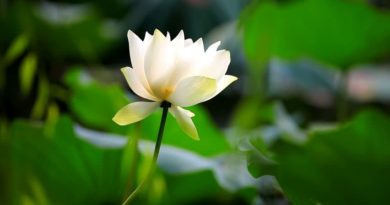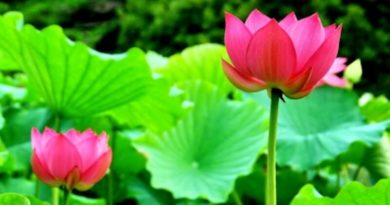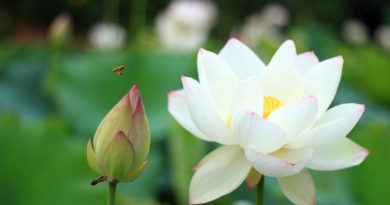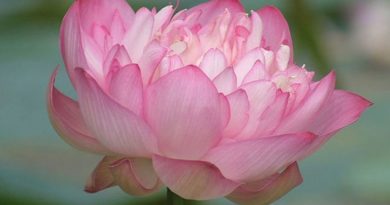DHAMMA PADETHA – 21. VIPASSANA MEDITATION SHOULD BE PRACTISED
DHAMMA PADETHA – VIPASSANA MEDITATION SHOULD BE PRACTISED
Human life is so full of problems such as the problem of food, clothing, shelter, social affairs, political affairs and so on. Compared to the lives of devas and brahma;, the human life-span is too short. A hundred years in the human world is just one and a half hours in the world of paranimmitta-vasavatti celestial devas.
However, though human life is too short and full of problems, it offers the best opportunities to cultivate or accumulate merits and paramis which will lead to the cessation of sufferings and nibbana. All Buddhas, Paccekabuddhas, Arahants who had attained nibbana accumulated merit and paramis in this human world.
That is why while you have this human life you should make use of your time most profitably. If you wish to make use of the time most beneficially you must practise satipatthana vipassana meditation. Practising satipatthana vipassana meditation means using your available time in the best way which will be most beneficial.
In practising satipatthana vipassana meditation by just doing one simple job of being mindful you are extinguishing lobha, dosa, rnoha defilements which will lead you to apaya on one hand. On the other hand, you will gain maturity of concentration insight (samadhi nana), which will lead you to the noblest nibbana. Thus two things are being accomplished.
Consequently, while you have human life you should practise satipatthana vipassana meditation which is most beneficial for you.
Practising satipatthana vipassana meditation is the work of the mind which is very subtle and difficult. However. it was practised by Lord Buddha himself and had given us the method with great compassion. Thus if we practise correctly we will know for ourselves calmness and firmness of the mind remarkably as well as experience insight. We will gain happiness which ordinary human beings and celestial beings cannot experience. That is why it is of vital importance to practise satipatthana vipassana meditiation.
By practising satipatthana vipassana meditation you will certainly, beyond doubt, gain magga—phala nana by which you will escape apaya, samsara and miseries. You will reach nibbana definitely for which you have prayed every time you do meritorious deeds. Other than the practice of satipatthana vipassana meditation there is no way to attain magga, phala, nibbana. That is why you should practise satipatthana vipassana meditation in this human life.
In practising satipatthana vipassana meditation, you are trying to discover the true nature of the changes that are taking place speedily in your physical and mental processes. To note the phenomena of mind and matter which keep changing at a great speed there are four dhammas:
1. Kayanupassana Satipatthana – to be mindful to know every bodily behaviour
2. Vedananupassana satipatthana – to be mindful to know the three types of vedana; unpleasant sensations, pleasant sensations, neutral sensations
3. Cittanupassana Satipatthana – to be mindful of the ever changing mental processes
4. Dhammanupassana Satipatthana- to be mindful of the remaining phenomena other than mentioned in the above three categories
Kayanupassana – Noting every bodily behaviour that arises such as walking, standing. sitting, bending and stretching your arms, to know the nature of all their manners. At the beginning you are unable to note all the bodily actions. To gain concentration or samadhi you have to sit and meditate.
At sitting meditation, you can either sit cross-legged or folding your knees to enable you to meditate for a long time. Your head and back must be erect, keep your attention at the abdomen. As you breathe in note, ‘rising’ and be mindful of the inner motion that rises up. Do not think of the form of the abdomen, which is the concept (pannatti), note attentively how the abdomen rises up as the air pushes from inside, which is the reality (paramattha).
When you breathe out or exhale you must note, ‘falling’ as the motion inside falls, to know the nature of the phenomena. Do not note the form of the abdomen (pannatti) but be mindful of the falling movement of the abdomen and register its occurrence penetratively (paramattha)
As your concentration develops you will realize that the rising and falling of the abdomen of the physical body is separate from the noting mind. This knowledge discerns the nature of rupa from that of nama. Apart from the rising and falling of the physical body and the noting mind there is in reality no such thing as self. As you keep on noting continuously you will discover that because there is a cause, there is an effect. Later when your samadhi strengthens you will perceive by comprehension, anicca, dukkha and anatta.
Later when the samadhi nana becomes stronger, the material and mental processes arise and vanish at a fantastic speed. One will experience for himself or her self that the bodily behaviour such as walking, standing, sitting, lying down, bending stretching arise and disappear immediately as noting them is kept on.
After realizing the appearance and disappearance of the physical behaviour such as rising, falling, walking, standing, sitting, lying down, bending and stretching you will be able to note the arising and passing away of vedana sensations. When you are noting the conscious mind also you will notice its appearance and disappearance. When you are noting seeing, hearing, smelling you will discover the nature of its arising and passing away. You will experience happiness significantly which no ordinary human beings or devas can experience.
When you continue being mindful without interruption, your insight will develop step by step and attain fruition by way of sense objects when you reach sotapatti magga phala nana. All the bad kamma due to unwholesome deeds done in the previous countless number of existences which will lead you to apaya will be entirely extinguished. Beginning from this present life since you will have no chance to do any demerit which will lead you to apaya you will be entirely free from bad kamma.
When you die you will have no more doubts. Can one be reborn in apaya, or as animals or in the woeful states of petas and the most ugly looking asuras? You will never reach the woeful states of apaya. You go through life cycles fearlessly.
If a sotapanna who has realized nibbana by magga phala nana should be happy in the rounds of rebirth and forget the practice of satipatthana vipassana meditation, he will forget it for seven lives at the most. After seven rebirths he will become specially remorseful and practise satipatthana vipassana meditation and attain nibbana as an arahant.
Even if a sotapanna is happy in the rounds of rebirth he will scarcely have sensual pleasures in the mundane world. He is mostly happy with dana, sila and samatha. Suffering from ageing, sickness, death, sorrow and lamentation in future lives have become so few as to be compared to the dust on Lord Buddha’s thumb nail.
At one time Lord Buddha was residing at Jetavana monastery in Savatthi. At that time the monks were assembled to listen to the discourse of Lord Buddha. As there was no time to give a discourse, Lord Buddha approached the monks and picking up some dust from the earth and putting it on his thumb nail asked though knowing it.
‘O monks, the dust put on my nail if compared to the whole earth, which is more?’
Whereupon, the monks answered:
‘O Lord, the dust put on your nail compared to the whole earth is too little to be accounted for. The dust on the whole earth is far too much’.
When the monks replied thus, the Lord said ‘O, monks, my disciples in the same manner, those who have practised satipatthana vipassana and have become sotapanna may be compared to the dust on my nail. The remaining beings who suffer samsara’s miseries such as old age, sickness, death, sorrow, lamentation, the bad kamma. may be compared to the whole earth. Thus the Enlightened One discoursed how a sotapanna who has practised satipatthana vipassana is relieved from suffering and attain happiness.
That is why, you should make use of the time available most beneficially by practising satipatthana vipassana meditation in this human life.









